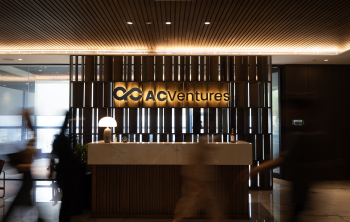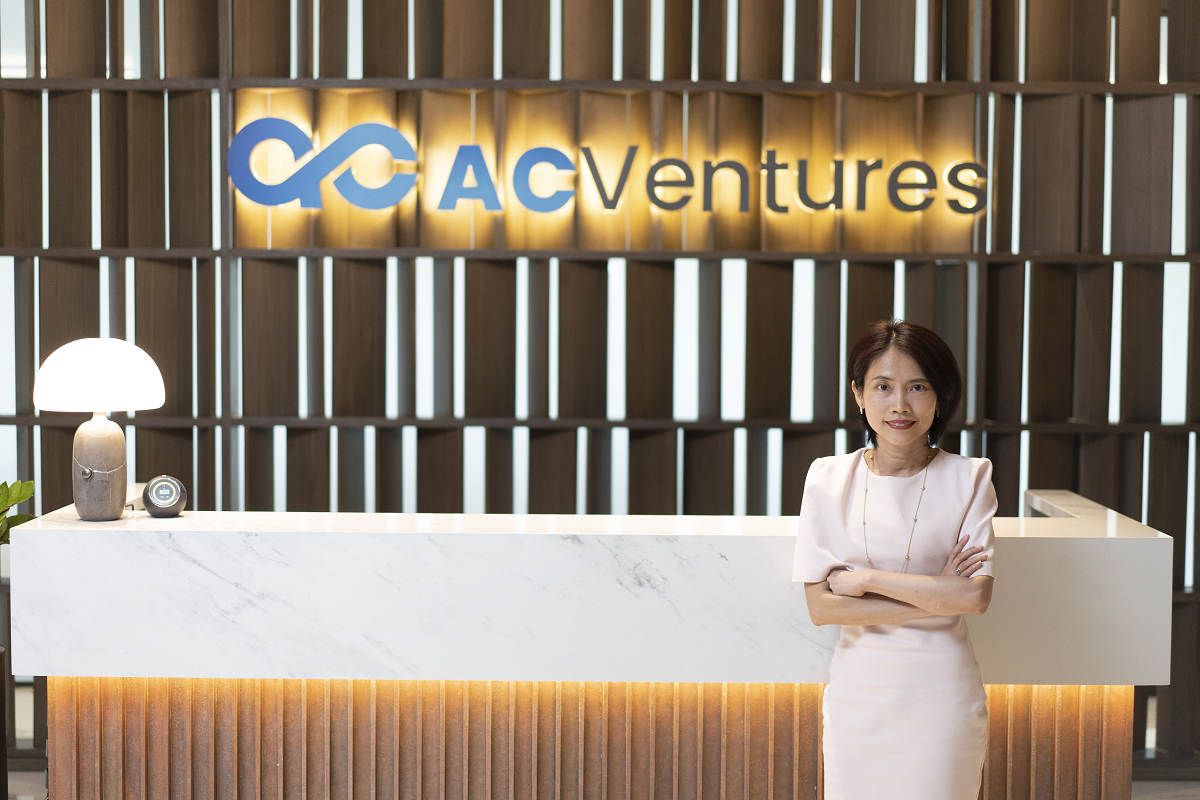
In Southeast Asia’s energy sector, fossil fuels continue to dominate, comprising around 83% of the region’s energy mix and largely overshadowing the 14.2% contribution from renewables. Among these, AC Ventures found that solar energy remains notably underutilised.
AC Ventures also found that while Vietnam has made significant strides, achieving an impressive 20.5% share of its power from solar, Indonesia still lags substantially, with less than 1%.
AC Ventures (ACV) is a top venture capital firm that invests in tech-enabled businesses focused on Indonesia and Southeast Asia, with over USD $500 million in assets under management. The firm empowers entrepreneurs with more than capital by combining operational experience, industry knowledge, deep local networks, and resources. AC Ventures’ team has invested in over 120 regional tech companies since 2012.
Roughly 40% of Indonesia’s off-grid areas are scattered across islands beyond Java. It is unlikely that the national grid will reach most of these places soon. This complicates infrastructure development but also encapsulates a broader challenge facing the region: harnessing its abundant renewable resources effectively.
For those less familiar with energy terminology, a one-gigawatt power plant produces enough energy to power approximately 750,000 homes. There are 1,000 gigawatts in a terawatt, and our global civilisation currently runs on around 17.7 terawatts of power from all energy sources—oil, coal, natural gas, and alternatives such as solar, wind, hydropower, and others.
Given the foregoing, Southeast Asia-based climate investor Helen Wong, Managing Partner at AC Ventures, discussed the outlook on solar energy in Indonesia. As Southeast Asia’s most populous country, Indonesia accounts for 40% of the region’s power consumption.
Early Retirement of Coal
The regional prospects for solar energy are compelling, according to Wong. Southeast Asia has a technical potential of 17 terawatts—more than 20 times the capacity needed to meet the net-zero emissions target of 2050—yet current renewable energy capacity stands at a mere 99 gigawatts.
Against this backdrop, opportunities are afoot and investors are already hedging their bets today in the region’s renewable energy space.
The Just Energy Transition Partnership (JETP) for Indonesia was launched in November 2022 at the G20 Leaders’ Summit in Bali. It is an agreement to mobilise an initial USD $20 billion in public and private financing to decarbonize the nation’s energy sector. The country resolved to accelerate renewables domestically, with a recently revised target of achieving 19–21% renewable energy by 2030.
A big part of the plan involves the early retirement of Indonesia’s coal plants, which currently account for a staggering 60% of the local energy mix. To bridge the inevitable production gap, an aggressive ramp-up in renewable energy investments is required, targeting an annual generation of 36 gigawatts from solar photovoltaics alone, a sevenfold increase from the investments recorded between 2018 and 2021.
Wong explained, “The urgency to do something about climate change is clear, especially in Southeast Asia. Looking at Indonesia, specifically, part of the problem is that there has historically been an overinvestment in coal which has resulted in a surplus of cheap electricity. In this sense, the JETP discussion should be viewed as encouraging for global climate investors.”
She added, “That said, the regulatory framework in Indonesia still has to contend with a lot of subsidies still going to fossil fuels, particularly coal, which at the moment makes it quite difficult for solar to compete. PLN, which manages the grid, is the only off-taker for solar energy, and currently, they are not too keen to actually purchase more solar energy.”
Starting with Commercial and Industrial
Optimistic about the outlook of solar energy in Indonesia over the next decade, Helen shared that AC Ventures most often comes across new ventures that fall into a few distinct categories.
She explained, “We at AC Ventures most often see three types of solar projects: utility-scale, which requires large capex, and has fluctuated according to the tenders from PLN; the commercial and industrial subsector, where companies can build or lease on-site renewable power plants for self-consumption; and residential, which currently is a bit harder to scale.”
Wong added that the most promising subsector in Indonesia’s solar energy market right now is the commercial and industrial space. “Xurya, our portfolio company, is the largest player in Indonesia’s commercial and industrial market today, supplying clean power to multinationals. They currently have a capacity of about 200 megawatts.”
Wong was also asked how investment firms evaluate the opportunity of solar energy projects in emerging markets like Indonesia.
To wit, Wong replied, “In Southeast Asia, solar energy is still at a very early stage. The key is in originating the right projects and ensuring that financing costs allow for a good internal rate of return. We look at the internal rate of return of a solar project and the overall payback period. Regarding subsidies, while nice to have, they can lead to market volatility and solar prices have come down so much that they are close to parity with fossil fuels.”
AC Ventures Backing the Winners in Solar
Wong then pointed to the use of solar yield optimisation tech like trackers and software that assesses the suitability of rooftops for solar installations, underscoring these as enhancements rather than fundamental solutions.
She also mentioned the use of IoT in auditing renewable energy projects, which is becoming increasingly vital as green financing grows, supporting the need for detailed auditing to facilitate loan approvals and attract necessary debt financing alongside equity in the investment landscape.

Helen Wong, Managing Partner at AC Ventures
“Financing is quite critical as the initial costs for solar projects are substantial. As investors, we need to understand how long the company can manage the payback of their initial investment and how they handle their cash flows,” she explained.
“Once these projects scale and mature, they can look to securitise the assets. Fortunately, we at AC Ventures see considerable support from development finance institutions. We are optimistic about the potential for more blended financing solutions, possibly with guarantees of first loss from entities like the World Bank, which would significantly bolster the industry.”
On the topic of what needs to happen for broad solar implementation to accelerate in Indonesia, AC Ventures’ Wong brought up the nation’s power grid. Increased grid connection between the nation’s main islands is likely to be achieved by 2028 at the earliest.
“More than USD $300 billion is needed not just in distribution but also in transmission for renewable energy,” said Wong. “The grid needs to be upgraded to be able to handle more intermittent sources of energy like solar. In the context of venture investing, we at AC Ventures are keen to back the winners in this space and help with the imminent energy transition in Southeast Asia at large.”
 (0)
(0) (0)
(0)Archive
- October 2024(44)
- September 2024(94)
- August 2024(100)
- July 2024(99)
- June 2024(126)
- May 2024(155)
- April 2024(123)
- March 2024(112)
- February 2024(109)
- January 2024(95)
- December 2023(56)
- November 2023(86)
- October 2023(97)
- September 2023(89)
- August 2023(101)
- July 2023(104)
- June 2023(113)
- May 2023(103)
- April 2023(93)
- March 2023(129)
- February 2023(77)
- January 2023(91)
- December 2022(90)
- November 2022(125)
- October 2022(117)
- September 2022(137)
- August 2022(119)
- July 2022(99)
- June 2022(128)
- May 2022(112)
- April 2022(108)
- March 2022(121)
- February 2022(93)
- January 2022(110)
- December 2021(92)
- November 2021(107)
- October 2021(101)
- September 2021(81)
- August 2021(74)
- July 2021(78)
- June 2021(92)
- May 2021(67)
- April 2021(79)
- March 2021(79)
- February 2021(58)
- January 2021(55)
- December 2020(56)
- November 2020(59)
- October 2020(78)
- September 2020(72)
- August 2020(64)
- July 2020(71)
- June 2020(74)
- May 2020(50)
- April 2020(71)
- March 2020(71)
- February 2020(58)
- January 2020(62)
- December 2019(57)
- November 2019(64)
- October 2019(25)
- September 2019(24)
- August 2019(14)
- July 2019(23)
- June 2019(54)
- May 2019(82)
- April 2019(76)
- March 2019(71)
- February 2019(67)
- January 2019(75)
- December 2018(44)
- November 2018(47)
- October 2018(74)
- September 2018(54)
- August 2018(61)
- July 2018(72)
- June 2018(62)
- May 2018(62)
- April 2018(73)
- March 2018(76)
- February 2018(8)
- January 2018(7)
- December 2017(6)
- November 2017(8)
- October 2017(3)
- September 2017(4)
- August 2017(4)
- July 2017(2)
- June 2017(5)
- May 2017(6)
- April 2017(11)
- March 2017(8)
- February 2017(16)
- January 2017(10)
- December 2016(12)
- November 2016(20)
- October 2016(7)
- September 2016(102)
- August 2016(168)
- July 2016(141)
- June 2016(149)
- May 2016(117)
- April 2016(59)
- March 2016(85)
- February 2016(153)
- December 2015(150)
